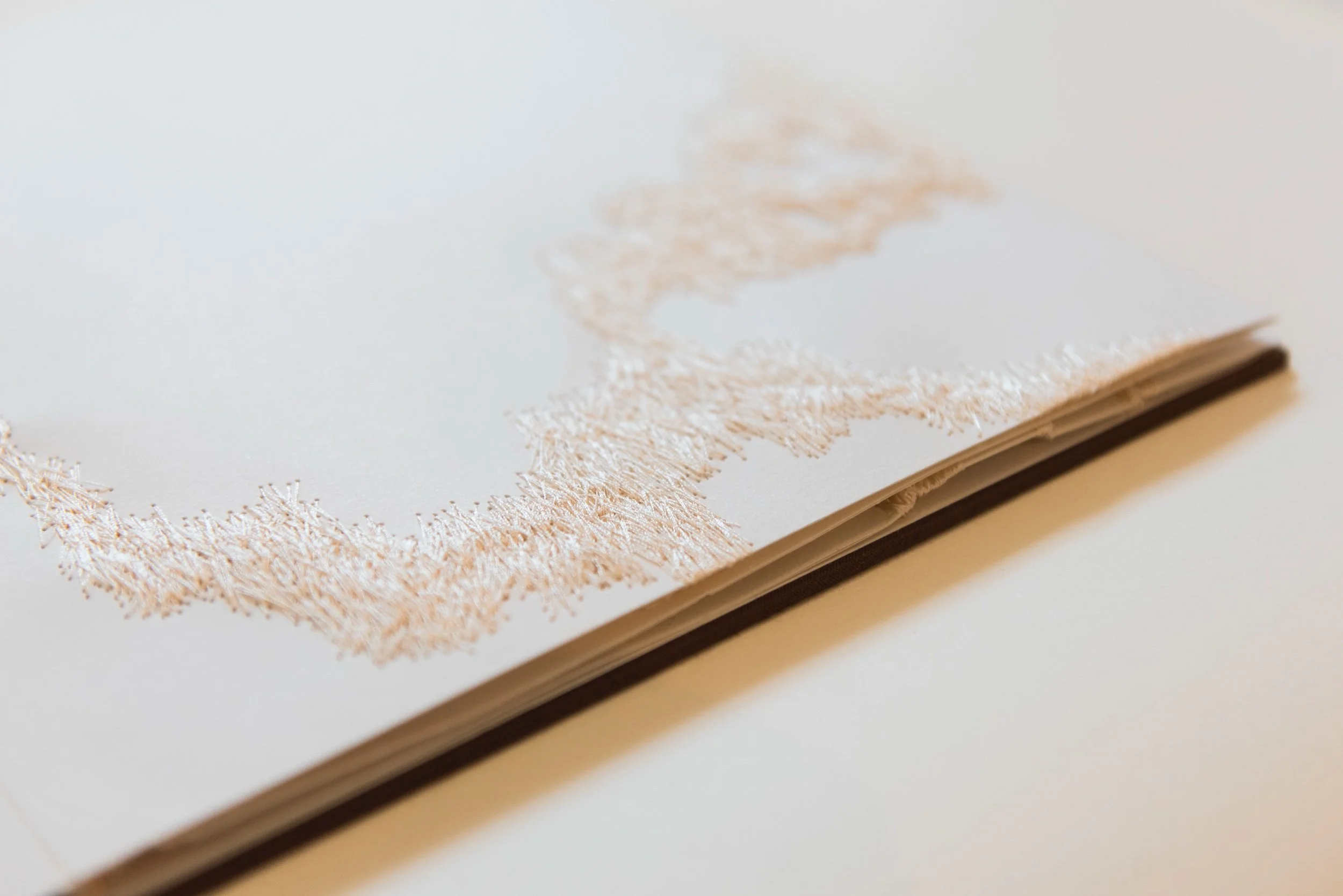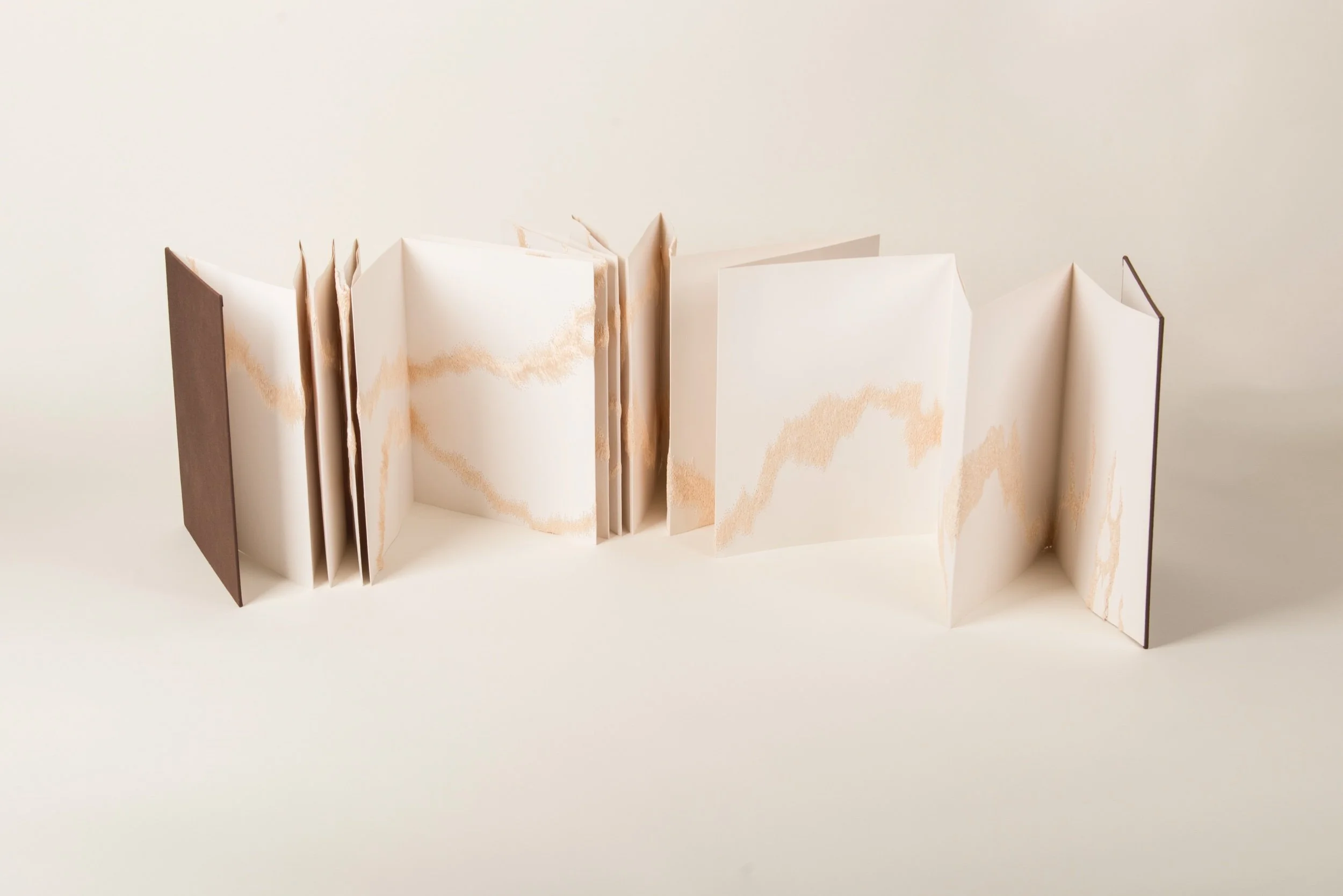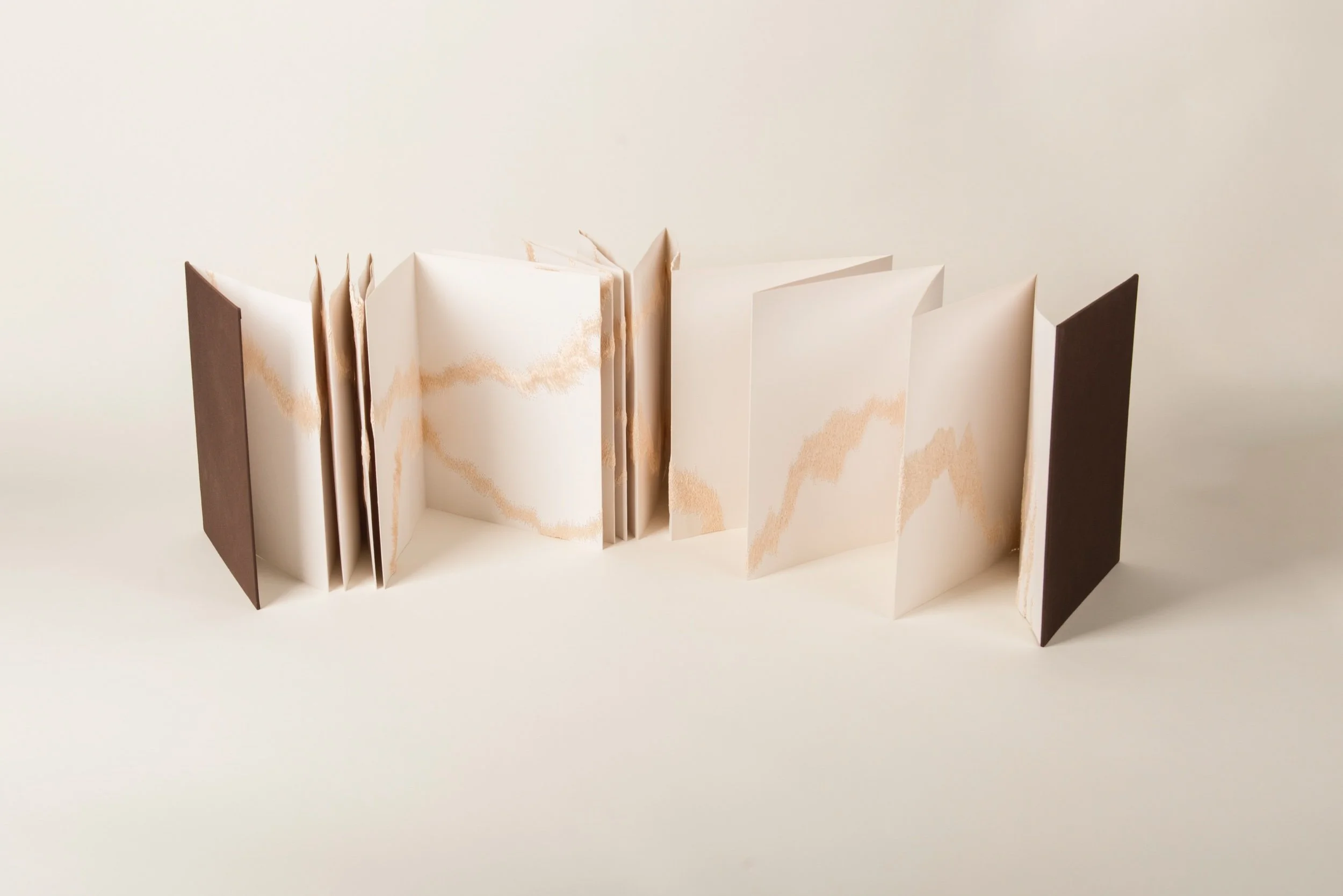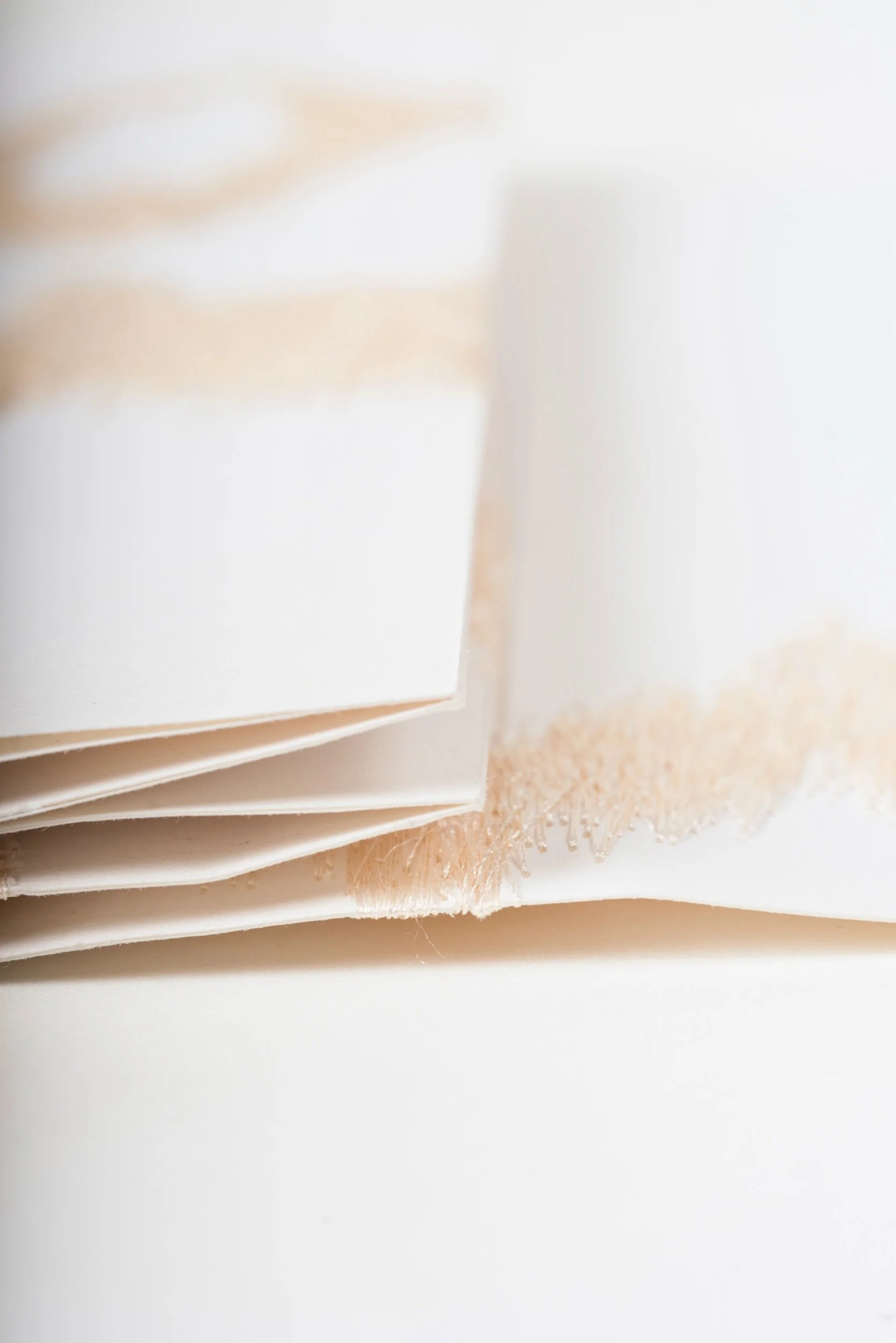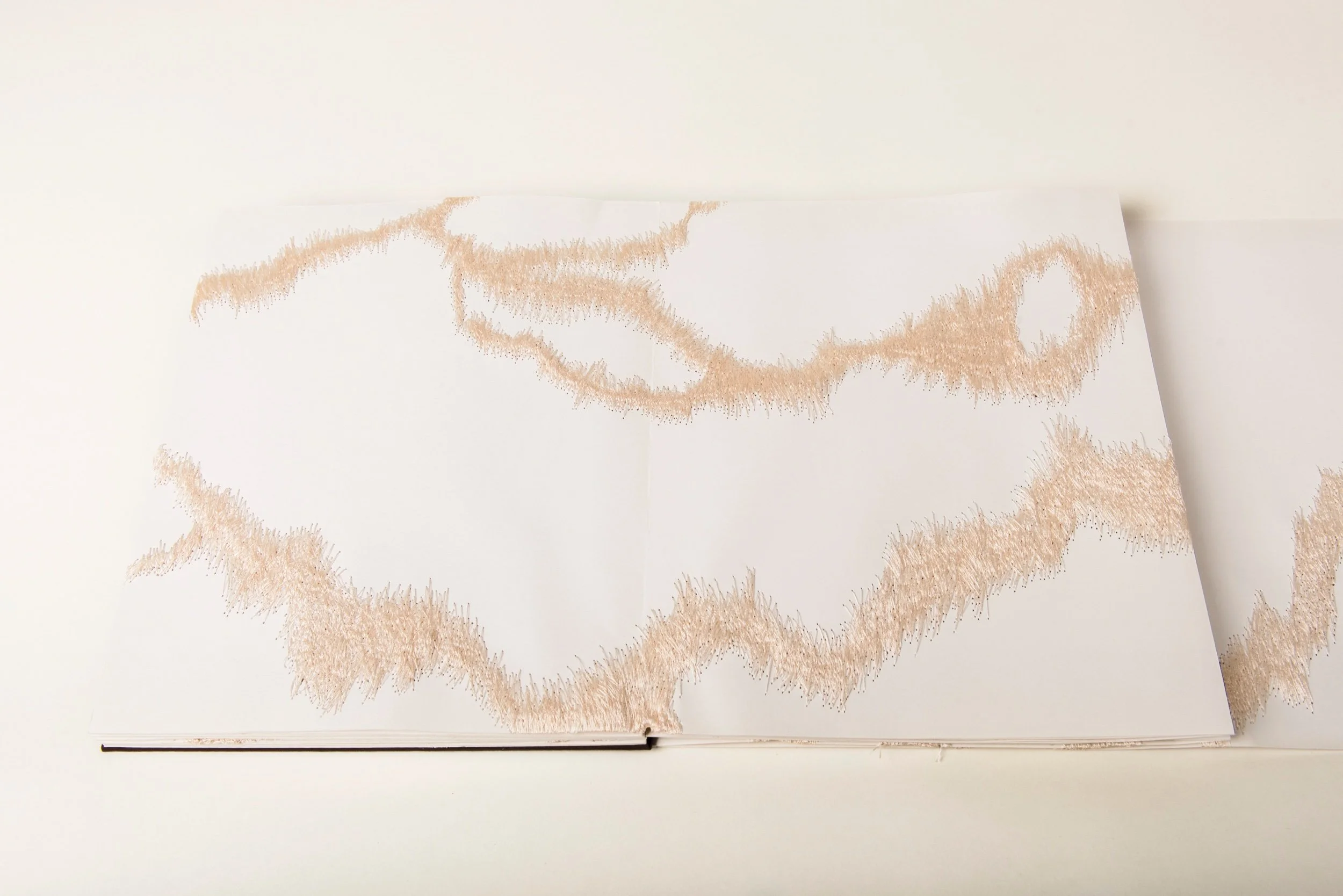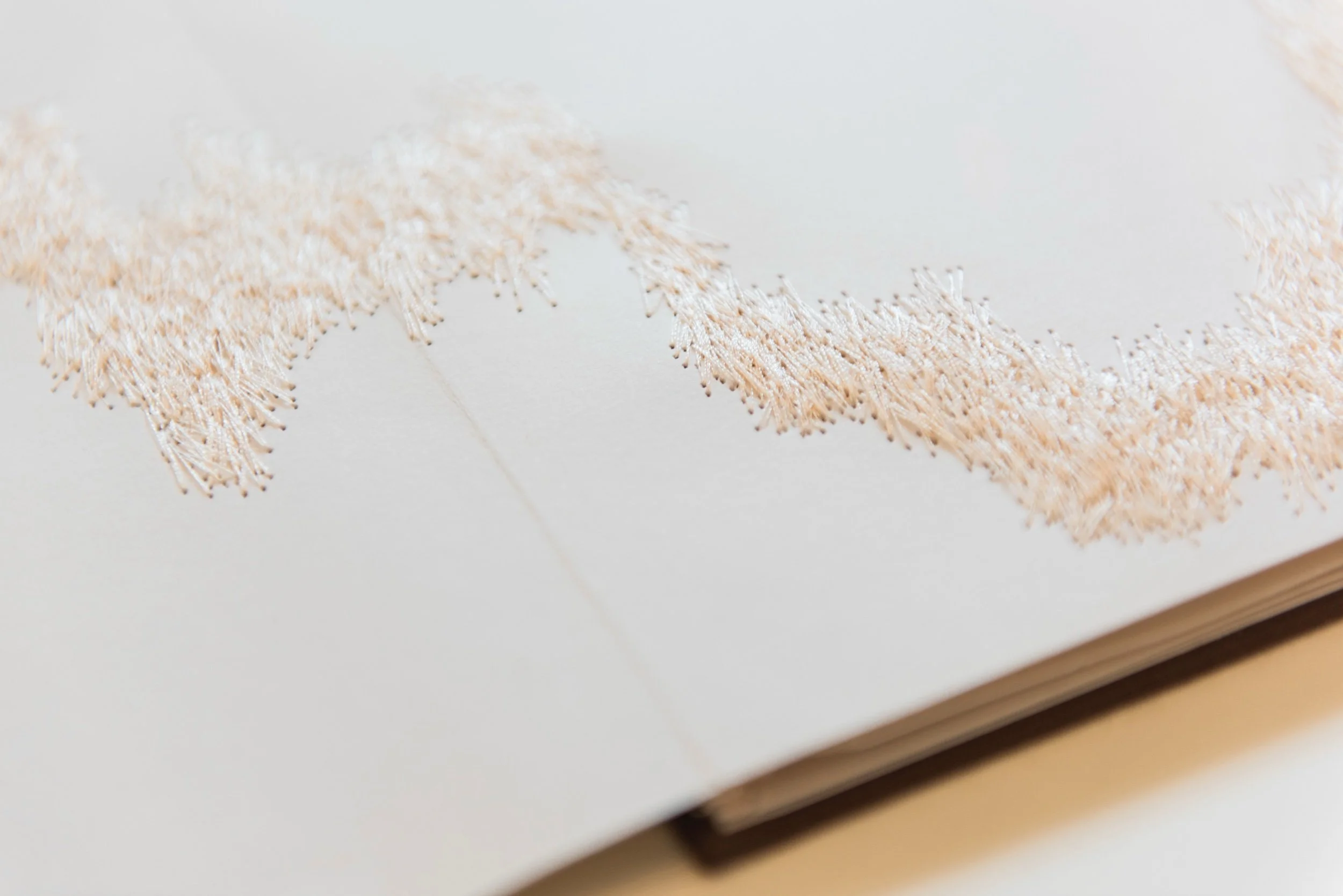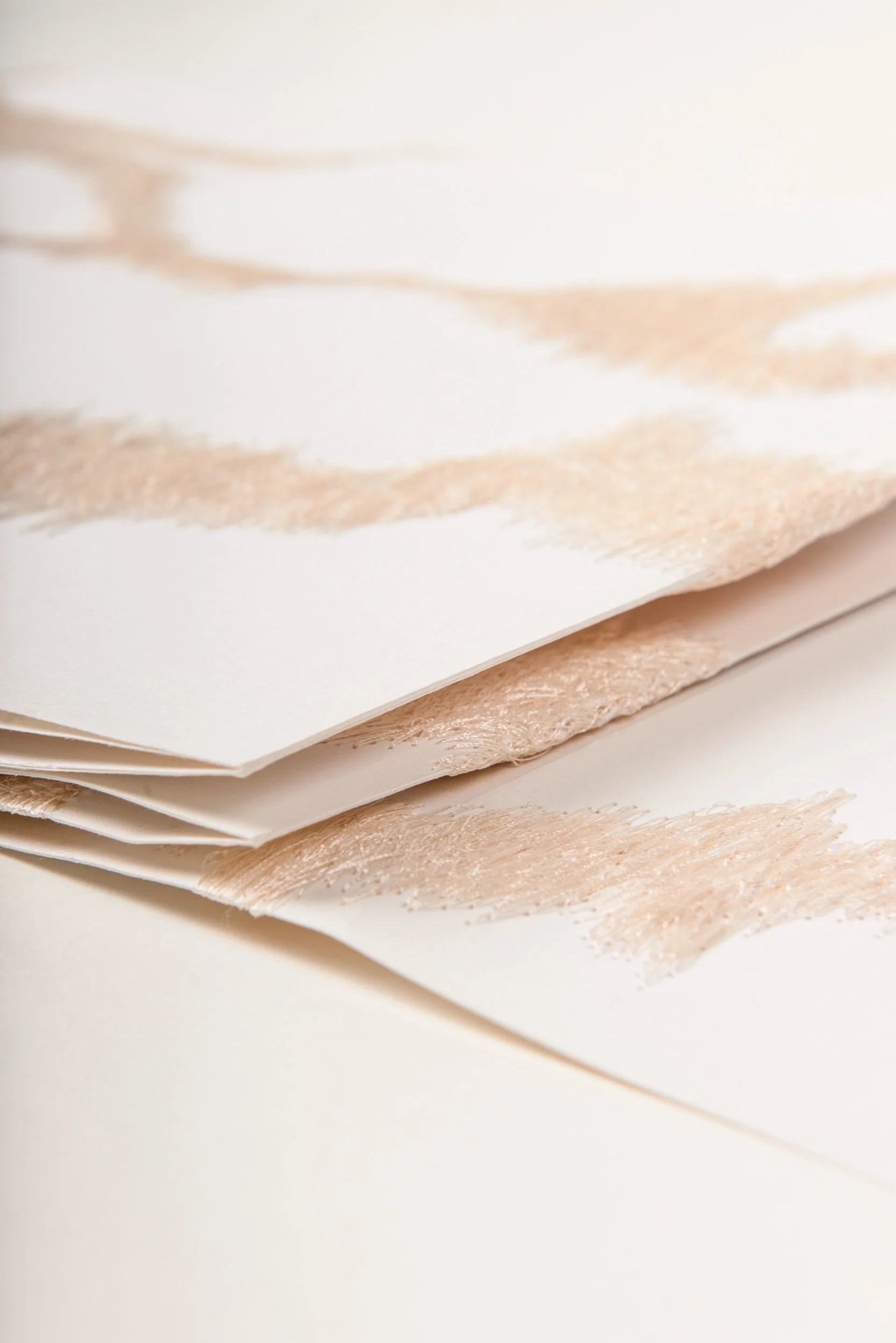MIXED MEDIA
Like a trail I want to take,
Like the mountains the waves leave on shore at my grandmother’s house,
Like she shimmies n scoots with her fifty legs.
Eighteen-foot embroidered book.
Thread on paper
Closed dimensions: 11 1/2 x 9 1/2 x 1 1/2 in
Extended dimensions: 11 1/2 x 216 in







Our House
Our Backyard
Embroidery, Soap, and Ink on Honeywell Rondelle Slide Index Card
6 ¼ x 6 ¼ in each
In 2019, I was gifted a family’s entire collection of slides. Tucked alongside the hundreds of images were index cards carefully labeling each one. Each line denoted vacations from Italy to Pensacola, snapshots of first dates, sleepy Christmas mornings, and my personal favorite, “our house, our backyard.”
These drawings of crepe myrtles and a chain link fence are taken directly from our own home. Made with thread, my husband’s Irish Spring soap, and ink, they explore the everyday materials that shape our lives and ground us. Unlike the slides, they do not aim to replicate a scene exactly but instead attempt to capture a similar sentiment desiring to make a moment last.
They hold the feeling of home, not permanence, but presence. Hope, joy, tenderness, and the unexpected challenges we face are what makes this place, our house, our backyard, so meaningful to us.



Deeply Moved
Eggshell on Heirloom Silver Platter
12 x 16 ¼ in
The Greek verb embrimaomai (ἐμβριμάομαι) is used in John 11:33, when Jesus witnesses the heartache of his beloved friends over the death of Lazarus. This word carries far more weight than a momentary sadness, it denotes a powerful emotional upheaval. It’s a deep, visceral reaction that can be translated as indignant, deeply moved, or even a gut-wrenching cry of grief and anger.
This detail reframes the moment in a profound way. Jesus isn’t passively observing human suffering, He is agitated, angry, and grieved by it. That response gives me hope. It suggests that death, suffering, and loss were never meant to be. They are not natural. If they were, why would we feel so devastated by them? Wouldn’t we instead greet them with peace?
But no, we mourn. The inclusion of the word embrimaomai tells us that this grief is not a flaw in us, but a reflection of the truth: death is wrong. Our bodies and our spirits were not made for decay and loss.
This insight changes everything. Because later in the story, we don’t just see comfort, we see resurrection. We catch a glimpse of the hope that one day, all will be made new. Our brokenness will not just be patched up, it will be fully restored, beyond anything we could imagine. And in that restoration, we’ll be reunited with those we’ve lost.
This piece was made from sourcing eggshells from my community, crushing them by hand until they were finely ground, and carefully arranging them on this heirloom silver platter.


1,000 Banyan Seeds
6 ¾ x 8 ¾ in Framed








Aggressive
Resin, Cocoa Power
This study based on the Brazillian Jabuticaba Tree explores desire and repulsion as it mimics the tree’s fruit. The visual rhythm of the fruit appears to be parasitic, however it is a product of the tree and proof of its life. Alarmingly it grows on the body, similar to an aggressive cancer.














Closed Book (Ten Layer Painting)
Canvas, Wood, Dirt, Acrylic Paint, House Paint, Panty Hose, Clay, and Glue, 10x12.5x2.5", February 2018.
A piece on memory that started out as a 6x6' painting is now a book you are not allowed to read. After ten distinct layers, this painting has become a sculpture. Though you are invited to ruffle the pages, hold, and twist the "book," you are never given complete access to the story.




Obsolete
Watercolor on Paper, Acrylic on Pillowcases, photo frames, 50x65”, November 2017
Underneath three photo frames lies a sheet of white paper covered with obsessive white marks. This piece influenced by the early work of Yayoi Kusama asks the viewer to peer into the frame, creating a ghostly reflection. Upon first viewing the frames, the viewer expects them to reveal someone else’s face, but instead they find their own. By using materials that are experienced by many people every day, this piece asks the viewer to consider how in their own life someone’s face may no longer occupy the frame, but they continue to be thought of despite their absence.



Tornadoland
Acrylic, Wood, Ash, and Alabama Dirt, 50x34"November 2016,
A piece influenced by Anselm Kiefer documenting the layers and scars that the land bears. This landscape becomes ghostly as the forms of trees emerge from the ashy white of the horizon and constellations of dirt shine through the velvet blues of the sky. Violently, a path is carved through the painting, mimicking the trail that a tornado in 2011 made as it ripped through the earth on which my family home was built. Subtle hints of reds and greens press through the ash as if hinting at some past life, or perhaps the new growth yet to come.
Typewriter Galatea
Typewriter Type, Notebook Paper, Ink, and Thread, roughly 24x36”, April 2015.
The ink line drawing of a Tesco Mark 1300 typewriter floats on a piece of dusky rose-colored paper. The graphic line quality of the typewriter is reminiscent of something pulled out of a diary, complete with haphazard ink blots and smudges. The primary emphasis of this piece is not on the typewriter itself, but on the paper that is in the process of being typed. A Sheet of notebook paper is attached to the piece giving the impression that it is rolled onto the platen and rising out of the typewriter. On the piece of notebook paper, printed in typewriter type, is the posterior view of a female figure reminiscent of Jean-Léon Gérôme’s painting of Pygmalion and Galatea. The woman’s figure is incomplete, tapering into the nothingness of the notebook paper just below her thigh. Upon looking more closely, it is realized that thread is sewn onto the sheet of notebook paper, the figure, and the typewriter itself. Imprisoning her firmly to her prison made of ink and paper.



Jenna Chameleon I
Photograph of acrylic paint on fabric and skin, 8.5x11, Ongoing (began August 2013)
Lost in a wall of pattern is a figure. Her hands grow away from her face as she simultaneously becomes her surroundings and breaks away from them.
